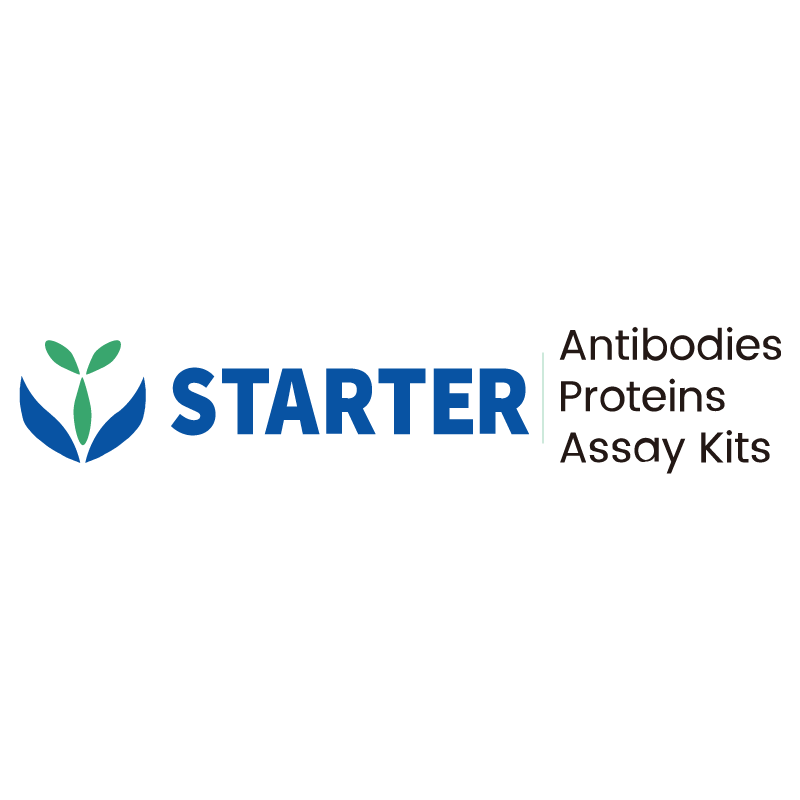WB result of Tenascin C Recombinant Rabbit mAb
Primary antibody: Tenascin C Recombinant Rabbit mAb at 1/1000 dilution
Lane 1: HCT 116 whole cell lysate 20 µg
Lane 2: U-87 MG whole cell lysate 20 µg
Low expression control: HCT 116 whole cell lysate
Secondary antibody: Goat Anti-rabbit IgG, (H+L), HRP conjugated at 1/10000 dilution
Predicted MW: 241 kDa
Observed MW: 190-240 kDa
Product Details
Product Details
Product Specification
| Host | Rabbit |
| Antigen | Tenascin C |
| Synonyms | Tenascin; TN; Cytotactin; GMEM; GP 150-225; Glioma-associated-extracellular matrix antigen; Hexabrachion; HXB; TNC |
| Immunogen | Synthetic Peptide |
| Location | Secreted |
| Accession | P24821 |
| Clone Number | S-775-274 |
| Antibody Type | Recombinant mAb |
| Isotype | IgG |
| Application | WB, IHC-P, ICC |
| Reactivity | Hu, Ms, Rt |
| Positive Sample | U-87 MG, mouse brain, normal mouse E14 foetal brain, normal rat E14 foetal brain |
| Predicted Reactivity | Pg |
| Purification | Protein A |
| Concentration | 0.5 mg/ml |
| Conjugation | Unconjugated |
| Physical Appearance | Liquid |
| Storage Buffer | PBS, 40% Glycerol, 0.05% BSA, 0.03% Proclin 300 |
| Stability & Storage | 12 months from date of receipt / reconstitution, -20 °C as supplied |
Dilution
| application | dilution | species |
| WB | 1:1000 | Hu, Ms, Rt |
| IHC-P | 1:100-1:200 | Hu, Ms, Rt |
| ICC | 1:500 | Hu |
Background
Tenascin-C (TNC) is a large, multimodular, extracellular matrix glycoprotein that exists in several molecular forms (180-250 kDa) due to alternative splicing and protein modifications. It is a hexameric protein with each subunit having a molecular weight of around 300 kDa. TNC has a restricted pattern of expression but performs a wide range of functions. It plays crucial roles in cell proliferation, migration, and adhesion modulation, inhibiting cellular adhesion to fibronectin. It is highly expressed during embryonic development, tissue remodeling, wound healing, inflammation, and cancer progression. TNC also regulates immune responses and is involved in both innate and adaptive immunity. Additionally, it has binding partners like fibronectin, collagen, and proteoglycans, and its expression is tightly controlled by various transcription factors and intracellular regulators.
Picture
Picture
Western Blot
WB result of Tenascin C Recombinant Rabbit mAb
Primary antibody: Tenascin C Recombinant Rabbit mAb at 1/1000 dilution
Lane 1: mouse brain lysate 20 µg
Lane 2: normal mouse E14 foetal brain lysate 20 µg
Secondary antibody: Goat Anti-rabbit IgG, (H+L), HRP conjugated at 1/10000 dilution
Predicted MW: 241 kDa
Observed MW: 190-300 kDa
WB result of Tenascin C Recombinant Rabbit mAb
Primary antibody: Tenascin C Recombinant Rabbit mAb at 1/1000 dilution
Lane 1: normal rat E14 foetal brain lysate 20 µg
Secondary antibody: Goat Anti-rabbit IgG, (H+L), HRP conjugated at 1/10000 dilution
Predicted MW: 241 kDa
Observed MW: 180-300 kDa
Immunohistochemistry
IHC shows positive staining in paraffin-embedded human kidney. Anti-Tenascin C antibody was used at 1/100 dilution, followed by a HRP Polymer for Mouse & Rabbit IgG (ready to use). Counterstained with hematoxylin. Heat mediated antigen retrieval with Tris/EDTA buffer pH9.0 was performed before commencing with IHC staining protocol.
IHC shows positive staining in paraffin-embedded human colon cancer. Anti-Tenascin C antibody was used at 1/200 dilution, followed by a HRP Polymer for Mouse & Rabbit IgG (ready to use). Counterstained with hematoxylin. Heat mediated antigen retrieval with Tris/EDTA buffer pH9.0 was performed before commencing with IHC staining protocol.
IHC shows positive staining in paraffin-embedded human lung squamous cell carcinoma. Anti-Tenascin C antibody was used at 1/200 dilution, followed by a HRP Polymer for Mouse & Rabbit IgG (ready to use). Counterstained with hematoxylin. Heat mediated antigen retrieval with Tris/EDTA buffer pH9.0 was performed before commencing with IHC staining protocol.
IHC shows positive staining in paraffin-embedded mouse cerebral cortex. Anti-Tenascin C antibody was used at 1/200 dilution, followed by a HRP Polymer for Mouse & Rabbit IgG (ready to use). Counterstained with hematoxylin. Heat mediated antigen retrieval with Tris/EDTA buffer pH9.0 was performed before commencing with IHC staining protocol.
IHC shows positive staining in paraffin-embedded rat cerebral cortex. Anti-Tenascin C antibody was used at 1/200 dilution, followed by a HRP Polymer for Mouse & Rabbit IgG (ready to use). Counterstained with hematoxylin. Heat mediated antigen retrieval with Tris/EDTA buffer pH9.0 was performed before commencing with IHC staining protocol.
Immunocytochemistry
ICC shows positive staining in HCT116 cells (top panel) and negative staining in U87-MG cells (below panel). Anti- Tenascin C antibody was used at 1/500 dilution (Green) and incubated overnight at 4°C. Goat polyclonal Antibody to Rabbit IgG - H&L (Alexa Fluor® 488) was used as secondary antibody at 1/1000 dilution. The cells were fixed with 100% ice-cold methanol and permeabilized with 0.1% PBS-Triton X-100. Nuclei were counterstained with DAPI (Blue). Counterstain with tubulin (Red).


